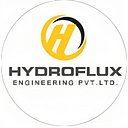Sewage Treatment Plant (STP)
Introduction
Welcome to our comprehensive guide on sewage treatment plants (STPs) by Hydroflux Engineering Pvt Ltd, a distinguished wastewater treatment company with over a decade of expertise. Explore our range of water and wastewater treatment systems, including Effluent Treatment Plants (ETP), Sewage Treatment Plants (STP), Demineralization (DM), Reverse Osmosis (RO), and Water Softener Plants, at www.hydroflux.co.in.
Understanding Wastewater
What is Wastewater and How is it Generated?
Wastewater, stemming from residential and industrial processes, demands meticulous treatment. Domestic wastewater, originating from households, and industrial wastewater, a byproduct of business activities, necessitate careful handling before release into the environment. Differentiating between the two lies in their sources, with domestic wastewater hailing from toilets and industrial waste originating from manufacturing processes, contributing to what is known as gray water.
Municipal wastewater primarily comprises organic compounds, posing a risk to aquatic life. Proper wastewater management is crucial, given the potential harm these substances can cause. Organic waste, particularly hazardous in oxygen-free environments, requires efficient treatment methods to prevent environmental and health hazards.
How Much Is Wastewater Generated in a Residential Complex?
Residential complexes, both large and small, generate substantial wastewater. Striking a balance between usage and adherence to standards is vital. While the standard suggests not exceeding 135 liters per person per day, the reality often surpasses this, necessitating more efficient STPs to handle the increased load.
The wastewater generated in residential units, especially when compared to commercial establishments, presents unique challenges. Despite the shorter duration of human occupancy, the resulting gray water often surpasses that of commercial complexes, demanding tailored solutions for efficient treatment.
What Are the Constituents of Wastewater Sewage?
Understanding the constituents of wastewater sludge provides insights into the complexity of treatment processes. From human waste and fats to plant materials and soaps, both dissolved and suspended solids demand attention. Inorganic substances from industrial processes, stormwater, and petroleum products further complicate the composition. Proper wastewater treatment becomes imperative to address these diverse constituents, ensuring the water’s safety for various uses.
Why Treat Wastewater?
Water treatment emerges as a crucial solution to combat water scarcity. As pollutants are removed during the wastewater treatment process, the treated water becomes clean and reusable. The benefits extend beyond pollution control to environmental preservation and community-wide resource management.
In addition to removing contaminants, wastewater treatment facilities address dissolved minerals, nutrients, detergents, proteins, carbohydrates, fats, oils, and synthetic compounds. Proper treatment transforms wastewater from a potential health hazard into a valuable resource for various purposes, including drinking, cooking, and irrigation.
How Is Wastewater Treated?
Common Methods for Sewage Treatment
Multiple methods exist for sewage treatment, with aeration being one of the most prevalent. Primary aeration involves treating raw sewage before reaching the main facility, where solids are separated from the water. Secondary sewage treatment utilizes microorganisms to degrade organic matter, producing secondary sludge. Combined sewer systems amalgamate urban runoff with sewage, undergoing primary and secondary treatments. Advanced sewage treatment may involve tertiary processes to further polish the effluent.
Filtering, chemical treatment, and neutralization are integral parts of wastewater treatment. Filters remove impurities, while chemicals like chlorine aid in bacterial elimination. Neutralization, achieved through the addition of base or acid, adjusts pH levels for optimal treatment.
How Sewage Is Treated and Recycled
The treatment of sewage effluent involves phases such as pathogen and parasite removal, sludge treatment, disinfection, secondary treatment, and biological treatment. The reclaimed wastewater finds applications in diverse areas, including agriculture, golf courses, cooling towers, and landfills.
In 2010, Israel’s remarkable achievement in recycling 80% of its sewage set a global benchmark. The Dan Region Wastewater Treatment Plant in Israel, recognized as a world model, harnesses natural filtration qualities to treat wastewater, providing a substantial portion of water for agricultural purposes.
Common Problems Associated With Sewage Treatment Plants
While STPs offer a long-term and cost-effective solution, operational and maintenance issues often arise. High noise levels, attributed to electric equipment and outdated designs, demand attention. Unpleasant odors, a common complaint, stem from factors like inadequate aeration. Proper regulation, especially by organizations like the Central Pollution Control Board (CPCB), is essential for effective STP management.
Why Consider Greywater Treatment Seriously?
If you’re contemplating a home upgrade and have extra space, consider greywater treatment seriously. The benefits range from using the space for ornamental plants to ensuring water security and energy bill savings. A separate greywater treatment system, more efficient and cost-effective, provides a reliable backup in case of STP failures.
The Difference Between Aerobic and Anaerobic Processes in Sewage Treatment
Understanding the differences between aerobic and anaerobic wastewater treatment methods is crucial. Anaerobic processes, devoid of oxygen, offer advantages such as lower energy consumption, biogas production, and treatment suitability for various scales. While aerobic processes are common, anaerobic treatments, despite higher initial costs, prove more efficient in the long run with less sludge generation.
Our Sewage Treatment Plant Technology
Various wastewater treatment technologies, categorized as high-tech and low-tech, employ biological processes. The three-stage process involves organic pollutant removal, oxidation-reduction, and odor treatment. The treated sewage is discharged responsibly, ensuring minimal environmental impact.
The Working Process of Sewage Treatment Plants
The working process of sewage treatment plants involves pollutant removal and effluent preparation for discharge. Secondary sedimentation, utilizing methods like trickling filters and activated sludge, removes suspended solids and organic matter. Biological processes in the sewage treatment plant, including different methods like trickling filters, activated sludge, and rotating biological treatment, ensure efficient wastewater management.
In conclusion, navigating the intricacies of sewage treatment is essential for environmental preservation and sustainable water resource management. At Hydroflux Engineering Pvt Ltd, we stand at the forefront of innovative wastewater solutions, committed to providing efficient and environmentally conscious sewage treatment plants. For inquiries and consultation, contact us or visit www.hydroflux.co.in.
Contact Us:
- Website: www.hydroflux.co.in
- Phone: +91 8851066212
- Email: support@hydroflux.co.in
